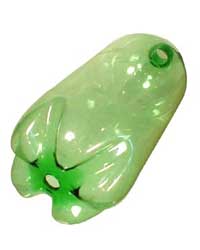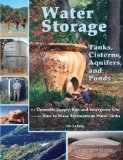Storing Water For An Emergency
Any of us who’ve thought much about emergency preparedness realize that one of the most critical items to store is water. Without sufficient water to see you through an emergency that lasts more than a few days, you and your family are at great risk. You simply can’t live without water. Fourteen gallons of water per person is the suggested amount to store for a two-week emergency situation. This amount is enough for subsistence purposes only: two quarts for drinking and two quarts for cleaning and bathing purposes a day. When you consider that a person normally uses in excess of 140 gallons of water per day for drinking, bathing, laundry, dishes, watering lawns, etc., this isn’t a lot of water. If you have the room to store more you will want to do so.
Containers
The easiest way to store the bulk of your water is in 55-gallon polyethylene (plastic) water drums. These can be obtained from most food storage companies or from local container companies found in the yellow pages. It is important that you use only food grade, good quality containers. Many times you can get food grade containers from companies that distribute beverages or syrups. If you clean them well, they can provide a good container that costs considerably less.
One word of caution: often the taste or odor of the previous contents has leached into the plastic and over time may be reintroduced to your water. If you plan to use previously used containers, make sure that what it had in it before is something you wouldn’t mind tasting or smelling in your water.
Most water containers come in 5-gallon, 15-gallon, or 55-gallon sizes. I always suggest that a family stores between two and six of these smaller containers, along with their 55-gallon drums. This is a prudent suggestion in situations where you might need to transport water in the normal course of events or in a situation where your normal water source might be disrupted, such as after an earthquake, hurricane, etc., and you might have to go to a secondary water source such as a water truck, stream, etc. to refill.
Water weighs approximately 8 pounds per gallon, so 55-gallon drums are much too heavy to handle (440 pounds), plus they are awkward. Smaller containers don’t hold enough water and would require too many trips, especially if you have to go to a source on foot. Five to fifteen-gallon containers are more practical and can easily be put into a wheelbarrow or child’s wagon and wheeled to and from an area.
 Two-liter pop bottles make a good container for additional water storage and cost nothing if you save them and fill them with water as you empty them. To economize many people are tempted to use empty milk jugs, but don’t plan to store water in these for more than three to four months. They are biodegradable and will break down within six months. Not only may you lose your water, but if they are stored near food or other items they may damage them. Heavy containers should always be stored close to ground level and secured to prevent breakage or possible injury in the event of earthquake, etc. Be sure to store your water away from any harmful chemicals or objectionable smelling products.
Two-liter pop bottles make a good container for additional water storage and cost nothing if you save them and fill them with water as you empty them. To economize many people are tempted to use empty milk jugs, but don’t plan to store water in these for more than three to four months. They are biodegradable and will break down within six months. Not only may you lose your water, but if they are stored near food or other items they may damage them. Heavy containers should always be stored close to ground level and secured to prevent breakage or possible injury in the event of earthquake, etc. Be sure to store your water away from any harmful chemicals or objectionable smelling products.
Water Sources
Culinary water (tap water) is what is usually stored for long term storage. If you have a clean, opaque container where the light cannot get through and your water is bacteria-free when you store it you probably don’t need to treat it further. Under these conditions the water actually gets more pure as it is stored. However, for most of us there is no guarantee that our culinary water is bacteria-free, so most of us prefer to treat our water in some way as a precaution as we store it. Several methods have traditionally been used to purify water for long term water storage.
Water Treatment
2% Tincture of Iodine: To use this add 12 drops per gallon of water. Note: Pregnant or nursing women or people with thyroid problems should not drink water with iodine.
Chlorine Bleach: Household bleach can also be used. This should contain a 5.25% solution of sodium hypochlorite without soap additives or phosphates. Use 1/8 teaspoon (about 5-8 drops) per gallon of water.
Most of us have used one of these methods to treat our water over the years. Both are inexpensive and are effective methods of killing bacteria. I have always preferred the iodine method myself. The one drawback, however, is that both may have negative health effects if used for long periods of time.
Ion: I was introduced to a product a couple of years ago that I now prefer to use instead because it is an excellent water purifier, but it also has many medicinal properties. It is a stabilized oxygen called Ion that is effective in killing all harmful bacteria without any of the harmful health effects associated with chlorine or iodine. For long term storage add 20 drops of Ion per gallon of water. One bottle will purify two 55-gallon drums. It is also excellent for your emergency packs (72-hour kits). It is small and light weight (2.33 oz.) but extremely effective.
Studies show that if water is bacteria-free and is stored in clean containers it will stay safe for several years. It is a good idea, however, to periodically check your water for purity and taste. And every few years it’s a good idea to change it. One of the things that affects the taste of water is it “going flat.” This occurs because of the oxidation that takes place as it sits.
You can improve the taste by pouring the water back and forth between containers to aerate it or by beating it with a hand egg beater. You also may want to store some flavorings such as fruit drink powders, kool-aid, etc. to add to your water if you find the taste objectionable.
One of the other benefits of Ion is the oxygen remains suspended, maintaining its good taste for much longer periods of time.
Conclusion
Remember also that you have several sources of water already in your home that can be tapped in an emergency, such as your hot water heater, toilet tanks (don’t use water from a tank that contains colored disinfectant, as it is poisonous.), water pipes, ice in the freezer, etc.
Water is relatively inexpensive to store and certainly not difficult to do, but certainly the time to store it is now. We take water for granted when things are normal, but in an emergency it becomes absolutely critical. This is an item you can’t afford to overlook in your preparedness preparations.
Additional Research:
 |


Leave a Reply